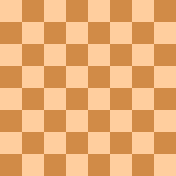
- Chess World Cup
- FIDE Grand Prix
- Olympiad
- World Championship
- List of strong tournaments
- List of world championships

- Checkmate patterns
- Chess openings
- Chess strategy
- Chess tactics
- Chess theory
- Endgames
- Pawn structure
- Problems/Compositions












|
|||||||||||||||||||||||||||||||||||||||||||||
| Moves | 1.e4 e5 2.Nf3 Nc6 3.Bc4 f5 | ||||||||||||||||||||||||||||||||||||||||||||
|---|---|---|---|---|---|---|---|---|---|---|---|---|---|---|---|---|---|---|---|---|---|---|---|---|---|---|---|---|---|---|---|---|---|---|---|---|---|---|---|---|---|---|---|---|---|
| ECO | C50 | ||||||||||||||||||||||||||||||||||||||||||||
| Origin | 19th century | ||||||||||||||||||||||||||||||||||||||||||||
| Named after | Eugène Rousseau | ||||||||||||||||||||||||||||||||||||||||||||
| Parent | Italian Game | ||||||||||||||||||||||||||||||||||||||||||||
The Rousseau Gambit is a chess opening that begins with the moves:
The gambit is named after Eugène Rousseau. White can decline the gambit by supporting the e-pawn with 4.d3. The resulting position is similar to a King's Gambit Declined with colours reversed, and White's king bishop aiming at Black's weakened kingside. Black will have trouble castling kingside and Ng5 is a likely threat. White's position is better, but still requires careful play.
Key themes for White are to attack Black's kingside and to avoid attempts by Black to simplify the position. Exchanges involving White's light-square bishop are particularly suspect.
White can decline the gambit and to wait to capture the f-pawn.
White still has a good game after the inferior 4.exf5, but the position is less clear. Black usually plays 4...e4, which White may meet by 5.Nd4! Nf6 (5...Nxd4? leads to trouble after 6.Qh5+) 6.Nxc6.
| a | b | c | d | e | f | g | h | ||
| 8 |

                                |
8 | |||||||
| 7 | 7 | ||||||||
| 6 | 6 | ||||||||
| 5 | 5 | ||||||||
| 4 | 4 | ||||||||
| 3 | 3 | ||||||||
| 2 | 2 | ||||||||
| 1 | 1 | ||||||||
| a | b | c | d | e | f | g | h | ||
White gets a clear advantage with 4.d4!: